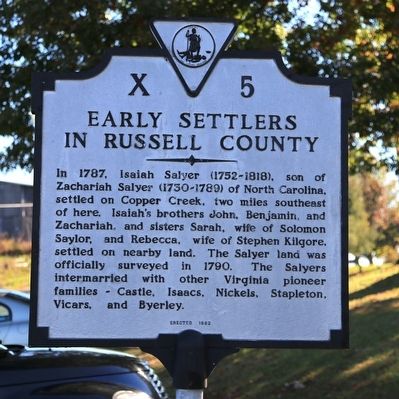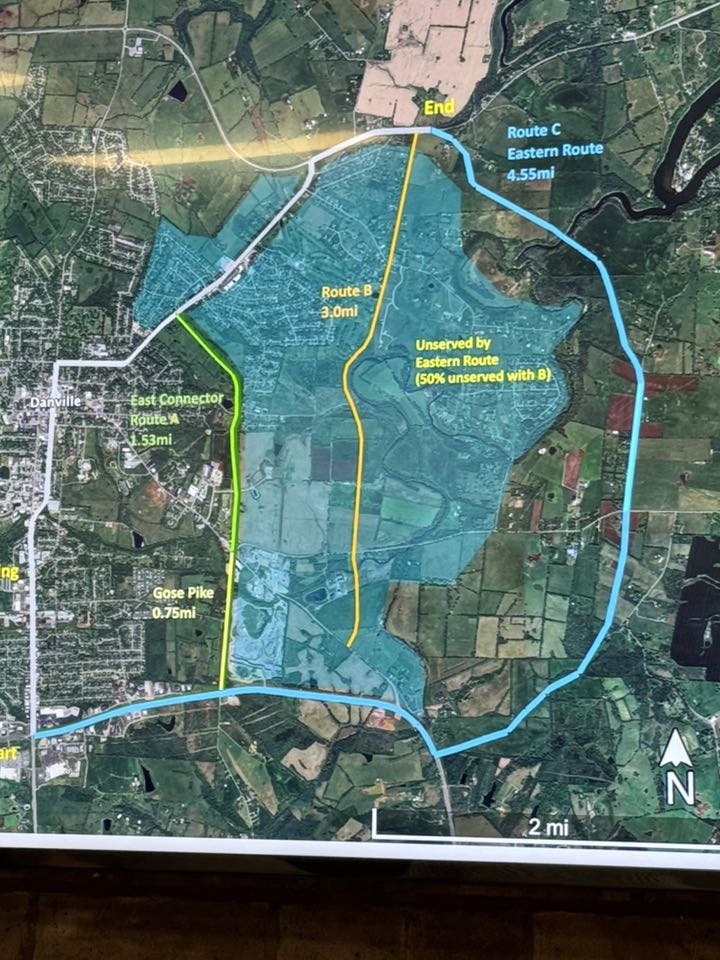Jacob Castle: Early pioneer
Published 4:15 pm Thursday, August 15, 2024

- (Photo submitted)
By Jadon Gibson
Contributing Writer
In 1746 Jacob Castle traded a musket and butcher-knife to the Indians for a small tract of land on the Clinch River. Within a few years he built the westernmost settlement on the famous wilderness road.
Trending
Castle was a long hunter making his livelihood by trading deer skins and animal pelts. He would leave home in the fall of the year, dressed in a deerskin hunting shirt, beaver cap, buckskin moccasins and leggings and be gone for months. The tail of his beaver cap would hang to the nape of his neck.
He took a hatchet, knife, shot pouch and provisions such as meal, salt, jerked beef and pemmican in a sling over his shoulder. Pemmican was a paste of dried and pounded meat mixed with fat and other ingredients originally made by North American Indians and later used by pioneer hunters.
He carried a long-barrel rifle made by German gunsmiths in eastern Pennsylvania, Maryland and along the pioneer trail. Originally it was called the Pennsylvania rifle but later became more famous as the Kentucky hunter’s rifle, or more commonly, the Kentucky long rifle.
The wagon road later became part of the Wilderness Road. Pioneers traveled for miles and days without seeing evidence of civilization. Occasionally there would be a hut along the rugged land of cliffs and forest in southwest Virginia.
Other pioneers cleared patches of land at Castle’s Woods in 1769 and moved in as squatters. Threats from American Indian attacks led them to live fairly close together.
The Loyal Land Company owned much land at that time. It led many pioneers to build a cabin and set up housekeeping without the formality of buying or renting. If the land was poor or the area proved unsafe they would move on. Otherwise they would stay until confronted by the owner who forced them to either buy or leave.
Trending
In 1770 the settlers in the area built a protective palisade to provide more security. They called it Snoddy’s Fort after William Snoddy who was the commander in the event of attack. A two-story block-house was constructed with gunports instead of windows. Eighty families lived in the area.
An additional settlement with palisade, named Moore’s Fort, was built a mile from Snoddy’s Fort after even more settlers arrived. William Russell was one of the new men who helped build it. Residents of the area were English, Scotch-Irish and German. They had some black slaves.
In late 1773 William Russell engaged Daniel Boone to lead a group of their settlers to Kentucky. They traveled in three groups. The women, children and baggage comprised one group. The older sons, slaves and cattle made up another. The men made up a third group.
The young men were attacked by Indians in Powell Valley and Boone’s son James and Russell’s son Henry were both shot through their hips and stabbed repeatedly. Several of the boys were killed instantly but the American Indians tortured Boone’s son by pulling out his fingernails and toenails. He died in agony begging to be killed. One of the slaves witnessed the event from a nearby hiding spot and wandered through the wilds for several days before finding his way back to Castle Woods.
Daniel Boone and the other members of the party aborted their mission after coming upon the site of the massacre and burying their dead. The two Shawnee chiefs who were responsible for the killings were hunted and slain.
About 20 American Indians attacked Castle’s Woods in 1783 while the men were away at war. The women fought off the Indians with only Ann Bush Neece being tomahawked. In 1785, Indians attacked the family of Archibald Scott near Castle’s Woods and killed five family members and abducted Fannie Dickenson Scott. She later escaped and found her way back after a month in the wilderness.
Early legal proceedings involved the offenses of profanity, drinking on the Sabbath, opening someone’s mail and selling ‘bad corn liquor’. Evidently it was not an offense to sell good corn liquor.
Staples of the frontier diet were hog and hominy which was usually served with cornbread. Milk and mush were eaten at supper along with sweetened water, molasses, gravy or bear’s oil. Pork and chicken were preferred to venison or beef. Chicken was often served when a family had company.
The men wore deerskin shirts, fringed with colored cloth, leggings and moccasins throughout the colonial years. Frontier women wore homemade cotton or wool dresses and sunbonnets. Not until the 1800’s did the men begin adopting the fashion of European trousers.
The United States adopted decimal currency in 1792 and the court established the prices which taverns could charge: a warm dinner, 25 cents; breakfast, 18 cents; a half pint of whiskey, nine cents; a quart of cider, nine cents; and overnight lodging “between clean sheets”, nine cents. Overnight lodging with soiled sheets was less.
But the west continued to be the land at the rainbow’s end. Castle’s Woods settlers and those in other villages pulled up stakes and traveled along Wilderness Road through Cumberland Gap, and push further westward. America was expanding to the lands beyond the mountains.
Jadon Gibson is a widely read Appalachian writer from Harrogate, Tn. His stories are both historical and nostalgic in nature. Thanks to Lincoln Memorial University, Alice Lloyd College and the Museum of Appalachia for their assistance.






